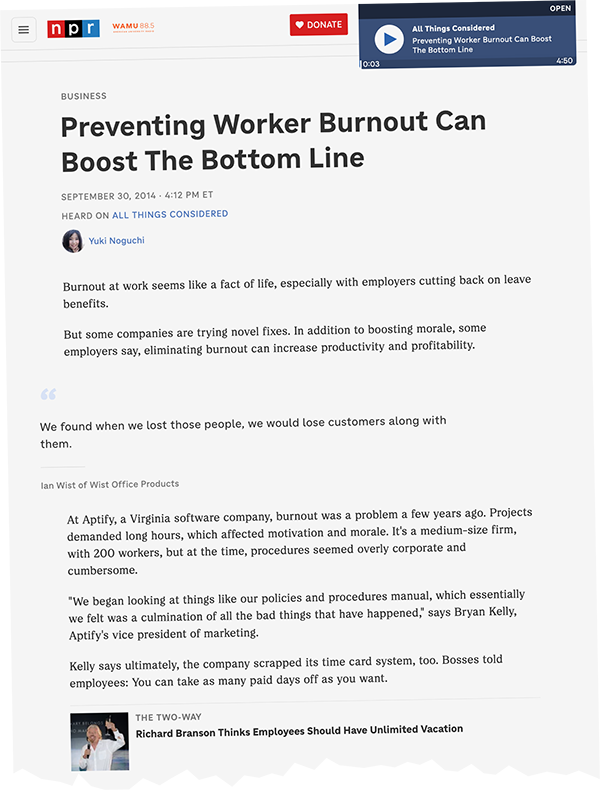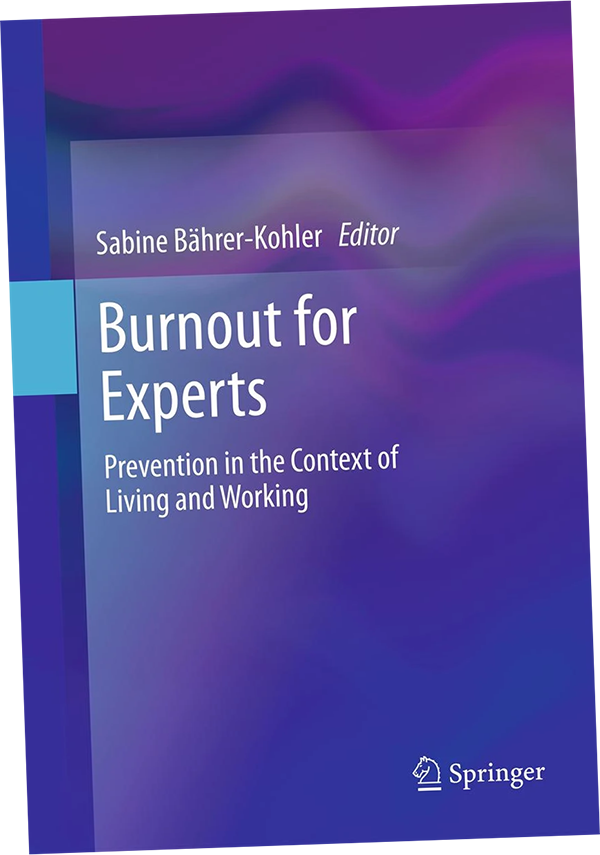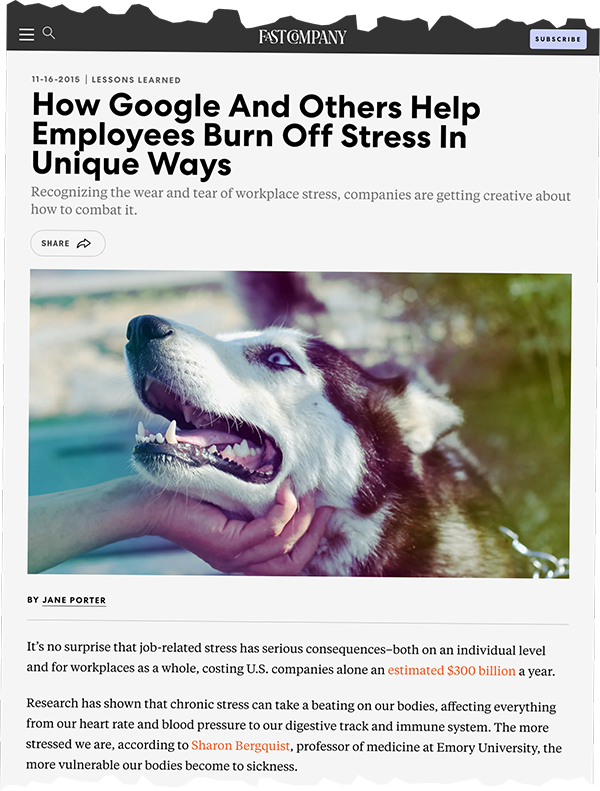Dr. Lockwood is one part educator, one part consultant, and one part clinician —
A rather unique blend!
Burnout
In the last decade or so we have seen an increase in the number of articles in business journals and magazines like Forbes, Harvard Business Review (HBR), and many others on a concept called “burnout.”
It seems to be a new fad in business circles to discuss this burnout idea as a means of framing conversations about employee well-being and whether or not companies should pay for “wellness programs” and other benefits that might prevent burnout. Organizations like HBR have tried to take on the causes of burnout, and they are close but not quite up to date on the recent empirical literature exploring the concept. In order to fill the gaps and help us all have healthier and more productive workplaces, let’s dig deeper into the concept.
But, before we do, let’s get some numbers out of the way so the reason for discussing burnout is perfectly clear.
In some studies, up to 71% of population said money was their top stressor.
Over 67% of population has indicated significant stress at work on a continual basis.
At least 42% of population has reported losing between 15-30 minutes of work due to stress each day on the job.
At least 35% of workers report 1 hour per day of lost productivity due to burnout symptoms.
Perhaps most problematically, reportedly fewer than 3% of employees use mental health benefits out of fear of being ostracized by their coworkers or supervisors.
It’s a big enough problem that even Google is putting in great efforts to manage and prevent burnout. So, this must be a big deal.
What is Burnout?
So, really, what is burnout? I’ve spoken with other psychologists and many are skeptical of burnout being a “real” thing. I’ve even had some colleagues say burnout sounds like some made up phrase to just describe depression or exhaustion. The skepticism is perfectly reasonable, and even important, so that we aren’t wasting time research a new form of depression or pathologizing a normal reaction to high demand work environments.
To define burnout in a thorough way let’s look at both a common psychology definition as well as an official empirical literature definition. In the most common psychological definitions of burnout, it’s a syndrome that has a cluster of symptoms such as signs of burnout found in the industrial organizational psychology research we often mistake as just “regular” stress associated with working: perfectionism, cynical attitudes, feeling “checked out or unable to “recharge” in downtime, low energy, and commonly experiencing more frequent illness at work & work crises. People can experience all or just some of these symptoms, and they might be experiencing what we call burnout.
From the standpoint of the industrial/organizational psychology literature, we have been studying burnout since Freudenberger coined the term in 1974. Since then, authors like Maslach have tried to formalize and systematically study the concept in order to determine the scope of the syndrome and how it impacts different professions. Up to now, burnout has been most widely-studied in medical professionals. Maslach’s original conceptualization of burnout included three dimensions reflecting a specific syndrome with regard to the workplace: emotional exhaustion, depersonalization, and [lack of] personal accomplishment, which has been confirmed via factor-analytic in studies.
Caveats
There exists debate about which of the three dimensions is causal, or is first to develop and trigger the other processes. Some authors show that depersonalization is a leading variable and other authors show exhaustion happens first. Finally, all though thousands of articles exist on the few topics, many of the studies have limitations. Finally, there is a pretty sizable disagreement about whether burnout is a separate concept, or if it is just some version of depression with reviews showing the inconsistency of the evidence of burnout as a stand-alone concept. With all of the caveats at hand, we can now explore burnout’s impact and how to manage the problem.
Impact of Burnout
Throughout the last few years different studies have been conducted (Fast Company, SHRM, Business Insurance) showing the impact of burnt out employees. The results of these studies have shown, for instance that the financial losses due to productivity issues is in the ballpark of between $100-300 Billion per year. Often, the individual struggling with burnout in a company will become less efficient, more skeptical, more reserved, miss more days at work, and may ultimately struggle with physical health and mental health symptoms. The individual might struggle with headaches, neck pain, fatigue, insomnia, GI distress, depression, substance use disorders, and even breathing or cardiac conditions with severe/prolonged/unmitigated work stress.
Imagine this theoretical for just a minute: you’re a nurse at a large city hospital. You’re overworked, underpaid, self-efficacy is slipping away, your one or two days off per week aren’t cutting it. Showing up to work is not only a “chore” but is now dreaded and maybe even disgusting. Ask yourself, how good would your patient care be? What if you’re an ER surgeon and burnt out? These jobs in medicine are challenging (often heart-breaking) enough as it is, and then you have this added layer of exhaustion and depersonalization, feeling as if nothing matters and nothing you can do will change things. Scary.
Now, imagine the impact burnout would have on your relationships with coworkers and colleagues. What would the impact be on one’s family? Perhaps you’re fortunate to have great friends and a loving family, or a very supportive romantic partner, this might mitigate the impact of burnout for a while. At some point, this will not be enough, and these relationships will likely start to suffer...and we all know that we need relationships. We’re a social species, we thrive when we have healthy connections. So, what can we do?
The solution. ⬇️
What Individuals and Companies can Do
Well, to be honest, it would take more time and energy to explain than what’s in the Bährer-Kohler reference I’ve used to write this to explain the myriad of individual, situational, and systemic variables that need to be addressed in order to prevent or manage burnout effectively.
For companies, in the big picture we have a few somewhat quality studies (but many more studies of higher quality are needed), and the results are modest: The average employer saved between approximately $5-16 per hour of work for every dollar spent on mental health treatment or some kind of burnout prevention (Invest EAP, Orren, C. & Terblanche, L., NPR). The studies also included results like an increase in overall productivity. At bare minimum, it might be wise for employers of all sizes to pay attention to the symptoms of burnout I discussed above, and if struggling reach out to a qualified professional for consultation. Issues such as role-clarity, work-load, hidden factors (employee pre-existing mental health issue or significant family stressor), might require an extra set of eyes to see objectively.
For individuals, workers like you and I, what can we do? Well, generally speaking we can do a great deal to prevent burnout. We have at our disposal many tools for stress management (example) and for building a healthy lifestyle. Common sense things like proper exercise, diet, and sleep can all help fight stress, a biomedical component of burnout. If you are experiencing specific workplace issues or mental health issues, it might be helpful to seek out a clinician or consultant to help learn how to navigate the issues more effectively.





